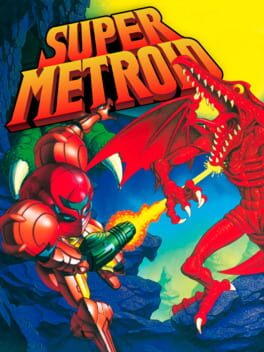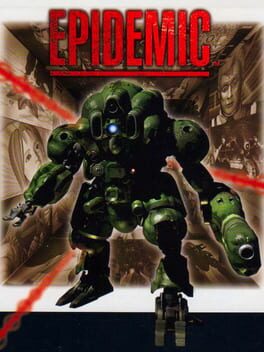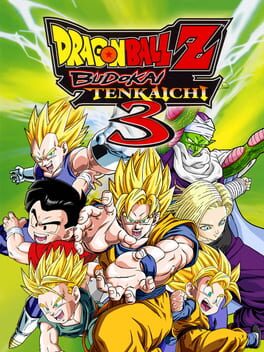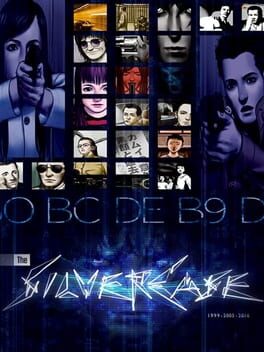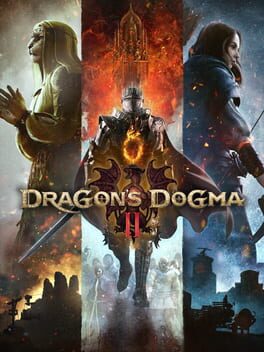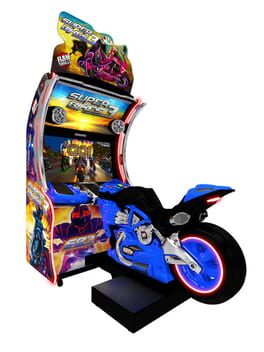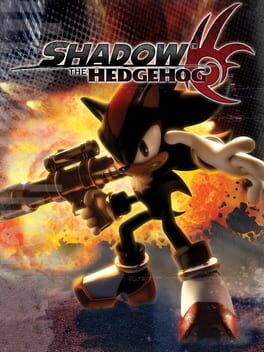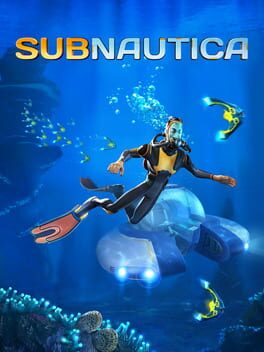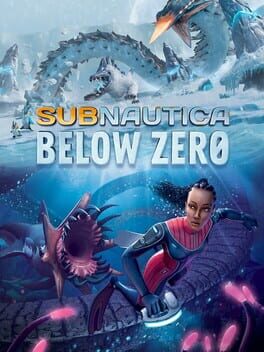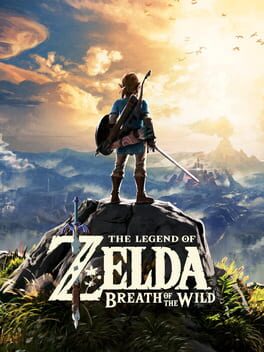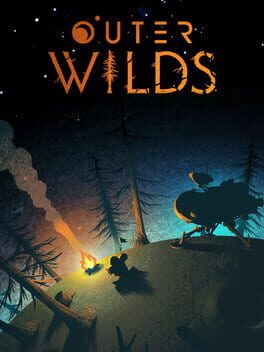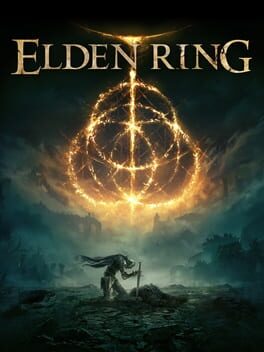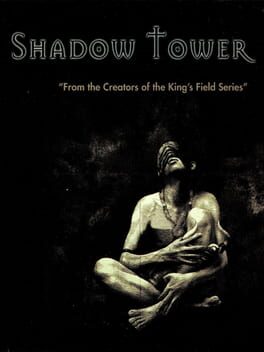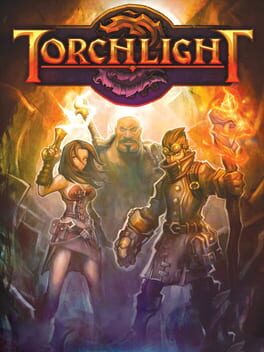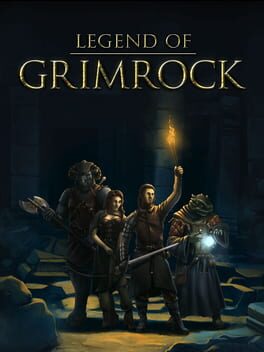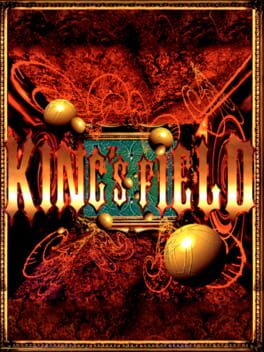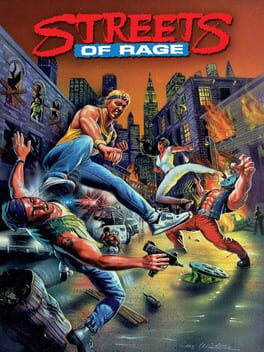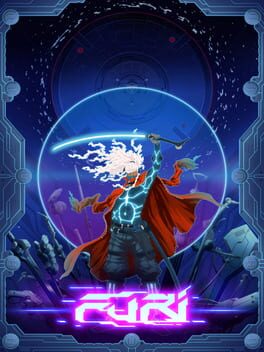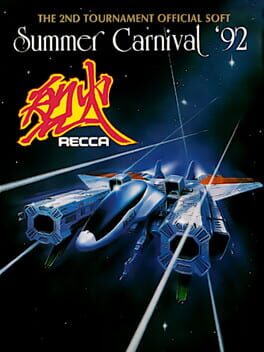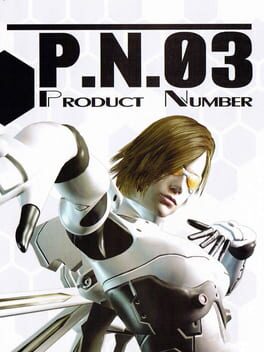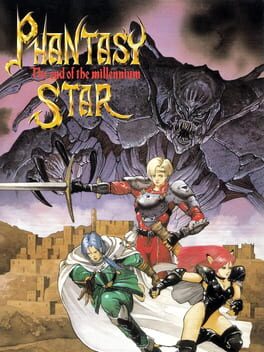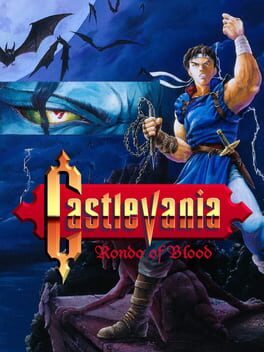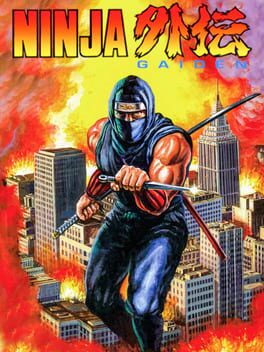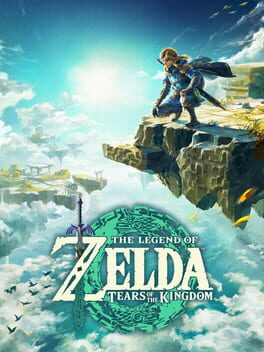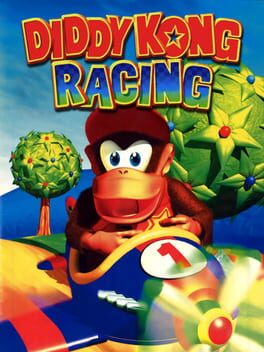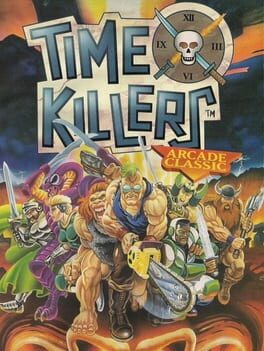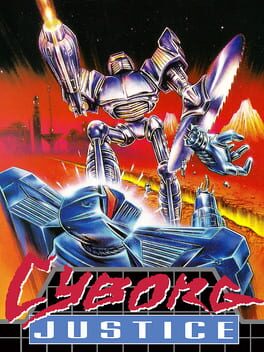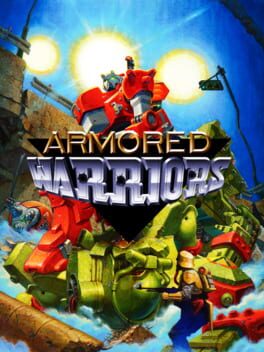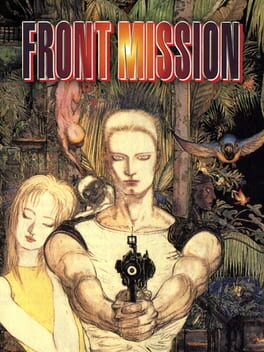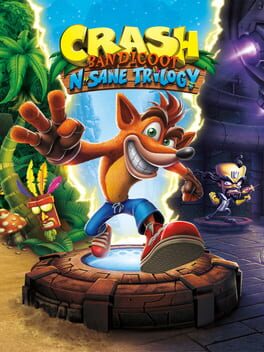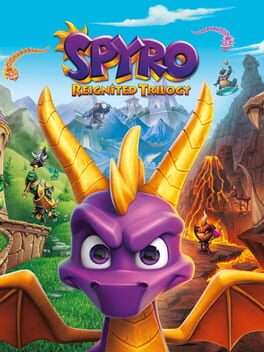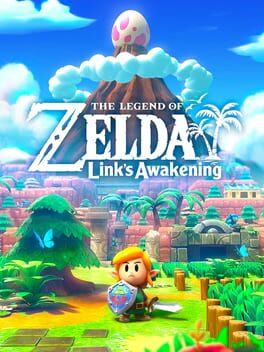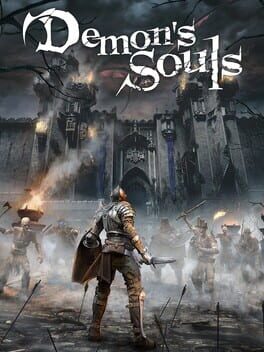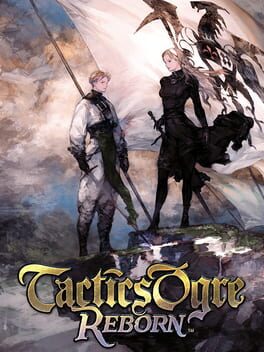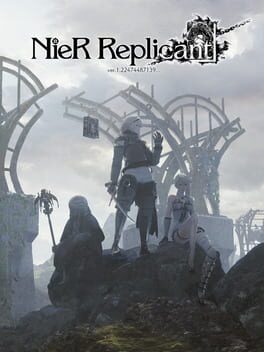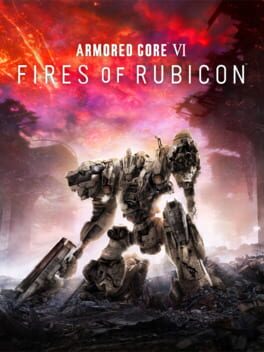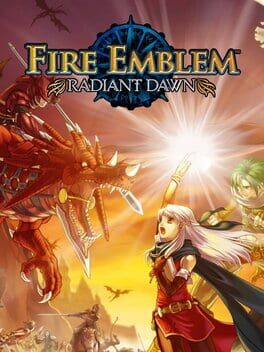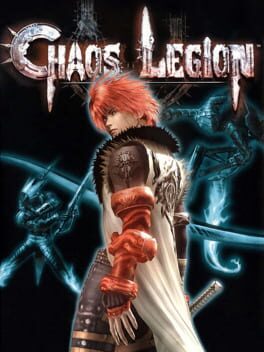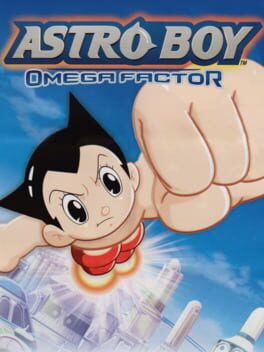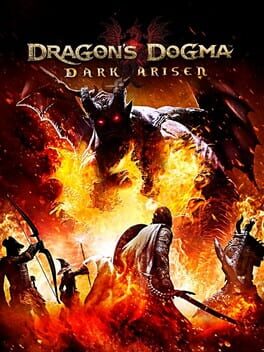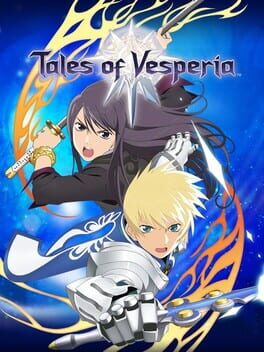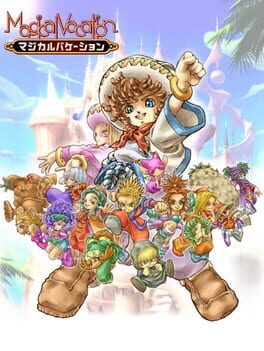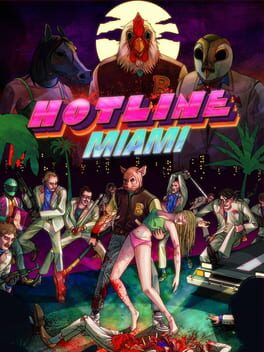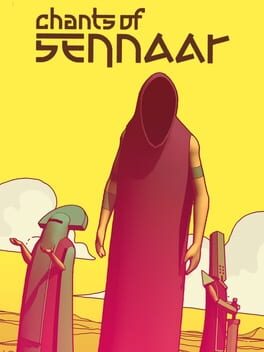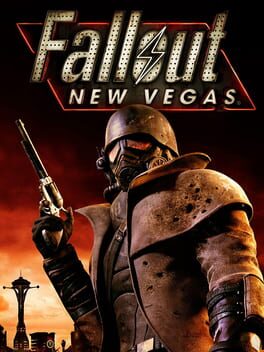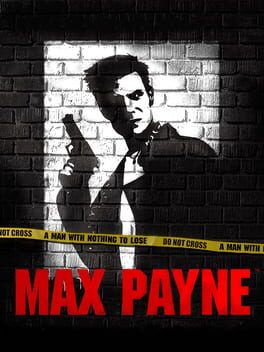Fauxscerf
235 reviews liked by Fauxscerf
Persona 3 Reload
2024
Never played but obligated to give it a 10/10 because of how much enjoyment I get from joining a new MegaTen server, making a joke about how Persona 3 was the first Persona game, turning notifications on my phone, and then shoving it up my ass
Super Metroid
1994
outside of the (understandably) on-the-nose coloured doorways nearly every instance of environmental interaction is rich and tactile. thirty years later it's still a wonder to grope and paw at every (Possibly Maybe) malleable surface and leverage every new upgrade toward greater structural manipulation and command
in ensuring how and when are given as much significance as what and where it forms a relationship between actor and environment that bears uncommonly personal patterns and markings as you learn to use Your body as an implement to interface with the world. sidepaths and back alleys that carve Under - Over - Through reshape the familiar thru layered mechanical discovery and shift the internal v external dynamic in turn; mastery of the self begetting exponential mastery of the other
a fitting problem then that the biocircuitry, plunging intestinal mazes, and gloomy dark ambient synthesis quickly become less something to endure so much as to dominate; the dissonance for show, and the brutality nakedly glamorous and one sided. so much of it exists in service to the pursuit of (Your) power, kneeling with its neck outstretched waiting to feel bones shatter for Your gratification. sure, I feel obscenely powerful, but I'd rather feel anything else
strange scene it is
every thing in flames
in ensuring how and when are given as much significance as what and where it forms a relationship between actor and environment that bears uncommonly personal patterns and markings as you learn to use Your body as an implement to interface with the world. sidepaths and back alleys that carve Under - Over - Through reshape the familiar thru layered mechanical discovery and shift the internal v external dynamic in turn; mastery of the self begetting exponential mastery of the other
a fitting problem then that the biocircuitry, plunging intestinal mazes, and gloomy dark ambient synthesis quickly become less something to endure so much as to dominate; the dissonance for show, and the brutality nakedly glamorous and one sided. so much of it exists in service to the pursuit of (Your) power, kneeling with its neck outstretched waiting to feel bones shatter for Your gratification. sure, I feel obscenely powerful, but I'd rather feel anything else
strange scene it is
every thing in flames
Epidemic
1996
it's not hard to understand why sony abandoned epidemic's original title for its western release; this is a massive improvement over kileak in almost every way (primarily because it isn't aping iron angel of the apocalypse anymore)
first, the almost: narratively it tries harder, but i'd be lying if i said that was to any greater outcome. cutscenes are pretty whatever and the localization is so piss-poor that it's often hard to tell what's going on or why you should even care to begin with
the core gameplay though? it's actually fun this time around because levels aren't entirely composed of 1x1 corridors and 4x4 squares! enemy fire is avoidable now and your mech feels equal parts weighty and satisfying to maneuver. the new ability to jet-boost through halls and around corners especially makes backtracking a nonissue and has a certain slickness to it that i'd compare to something like f-zero or wipeout. excluding deaths i logged about 3-4 hours and i could easily see that being cut down to 30-60 minutes on replays due to this mechanic alone
ammo and energy are also handled better - mainly because weapon energy recharges and boost juice occupies its own meter. can't say the boss fights are any more captivating as they're all still solvable by standing still or circle strafing while firing, but they serve more as a health/ammo check than anything else and i'm alright with that
i can't help but wish kileak's body horror elements were improved upon instead of completely abandoned, but i'll still take this over it any day. can sincerely recommend to anyone looking for an unconventional, mech-based fps
first, the almost: narratively it tries harder, but i'd be lying if i said that was to any greater outcome. cutscenes are pretty whatever and the localization is so piss-poor that it's often hard to tell what's going on or why you should even care to begin with
the core gameplay though? it's actually fun this time around because levels aren't entirely composed of 1x1 corridors and 4x4 squares! enemy fire is avoidable now and your mech feels equal parts weighty and satisfying to maneuver. the new ability to jet-boost through halls and around corners especially makes backtracking a nonissue and has a certain slickness to it that i'd compare to something like f-zero or wipeout. excluding deaths i logged about 3-4 hours and i could easily see that being cut down to 30-60 minutes on replays due to this mechanic alone
ammo and energy are also handled better - mainly because weapon energy recharges and boost juice occupies its own meter. can't say the boss fights are any more captivating as they're all still solvable by standing still or circle strafing while firing, but they serve more as a health/ammo check than anything else and i'm alright with that
i can't help but wish kileak's body horror elements were improved upon instead of completely abandoned, but i'll still take this over it any day. can sincerely recommend to anyone looking for an unconventional, mech-based fps
You haven't lived until you have played this game at 11 PM with all your friends over taking turns and tag teaming in when they needed to switch out. Some of my fondest memories to this day.
Rest in peace Akira Toriyama, you've inspired all Mexicans with your legacy.
Rest in peace Akira Toriyama, you've inspired all Mexicans with your legacy.
The Silver Case
2016
This review contains spoilers
In a game, let alone continuity, lousy with sharp, confrontational artistic direction, it’s one as simple as the back of the box that continues to work its way through me. It’s the illustration of Kusabi, Sakura, and Kosaka, in particular - Sakura’s exaggerated frown extends out of the image towards you while Kusabi and Kosaka converse around her. If you’ve played the game, you’re aware that this configuration can only happen in the events proceeding the finale (a massive torpedo-spoiler on the back of the box, funny!). By extension, this also means that the illustration is, to whatever degree, a reflection on the status quo after case#5:lifecut, i.e. the chapter of the game where everything boils over, a majority of the Transmitter cast straight up dies, and radical actions by the hands of the remaining cast occur.
I love this illustration for a few reasons - for one, Takashi Miyamoto captures a sense of mundanity so well. In game, you’re never really able to bear witness to a Kusabi at peace in ordinary life, and here he’s beautifully human in his pose - well-earned after his arc through the game. Secondly, through that same focus on the mundane lies a commentary on the dynamics these characters are engaged in. I don’t think it’s much of a stretch to imply that the gender dynamics put forth here can be seen as a disappointing reminder that leaving Kusabi (love ‘em as I do) as the sole surviving veteran of the HCU means that the same bitterness which ostracized Hachisuka, possibly enabling something within to give in to her inevitable death-filing and appearance as Ayame, is likely still in the air. But these observations pale, in my opinion, to the context.
As she continues ascending the 24th Ward’s crime department, after bearing witness to the very operation that almost(/successfully?) doomed her and the player character to a life of artificial personhood, and after witnessing the takedown of the two major antagonists of the game, Nezu and (eventually) Uminosuke, she still frowns at us, the player. Why? I thought danwa was a happy ending.
-
TSC is one of few games I can think of that really eludes simple genre description. Sure, it’s a crime procedural, up until it isn’t. It’s a conspiracy thriller... in spots. It’s Lynchian surrealist dystopia? Alright we’re just gonna say words now, I guess? The only thing that comes to mind for descriptors is, like, slipstream fiction, which, given 25W references seminal proto-Cyberpunk novella The Girl Who Was Plugged In, seems apt enough to settle on. I won’t even evoke the P-word. The one that rhymes with “toast auburn.”
But really, this thought exercise is all just a veiled move to get you to wonder about the limitation of genre fiction as it applies to TSC, and poke at its aspirations. For this to be a standard crime procedural, you’d expect the HCU to... function in some capacity? And conspiracy thriller’s a no-go considering the weight that spirituality and all other intangibles have here, in my opinion. The way I’ll continue from this point to put it is thus: the Mikumo 77 incident, the murder of Kamui by the underworld factions, and the ensuing Shelter Kids policy reverberate through the story on many different frequencies, and the effect of it all is so bleak that only genre convention can make the discussion palatable as fiction. But it doesn’t always cover it: the melancholic, ambling work of Tokio through Placebo, the brain-swelling conflict of information in Transmitter, I think both serve as a reminder that there’s no easy out from underneath the sin of government control. It’s no surprise, I guess, that the symptoms get much, much worse when we return to Kanto in The 25th Ward.
-
Kamuidrome thru danwa (and the equivalent reports from Placebo’s end) are so dizzying and hard to come to terms with that I have literally shaved my head since first playing this game. This is actually true! I have death-filed!
That said, I feel like an essential piece of advice I could give someone who’s in for their first time is to enact judgment on the information based on who and when it’s coming from. This is easy enough in some cases - I think most people are primed from birth to hate pedo-fascist Nakategawa enough to not mind his words. But even fan-favorite Kusabi, for instance... this entire game is a slow fade-to-white for him as he unlearns an entire ideology of criminality equating plague, one he’s enforced so much with violence, not just as a cop, but as a particularly fucked up cop. In the beginning, I wouldn’t blame you for sticking with the competent elder authority of the cast, but if the ending moments of Parade don’t convince you to question the prior chapters, then I don’t know what will. The state of this world can be figured out with relative certainty as long as you keep track of where you are in the game’s web.
Though deeply confusing (& not helped by a localization that I can only describe as “challenging” (no shade to Grasshopper James btw, I can only imagine trying to piece this together 😭)), this game masterfully tiers up its information in a way that makes the trek through the underbelly of the 24th Ward feel so uniquely haunting. While certain aspects (the bench-warming faction war at the batting center comes to mind) do feel a bit bizarre and maybe even underdeveloped as words on a (cyber)page, the thematic tapestry of this game is exceptionally rich, even among other lauded-for-thematic-richness games. I’m a lifelong MGS fan and even I have to admit that after coming to conclusions confident enough to type words about, I think we might be seeing a lunch-eating of unseen proportions.
I love this illustration for a few reasons - for one, Takashi Miyamoto captures a sense of mundanity so well. In game, you’re never really able to bear witness to a Kusabi at peace in ordinary life, and here he’s beautifully human in his pose - well-earned after his arc through the game. Secondly, through that same focus on the mundane lies a commentary on the dynamics these characters are engaged in. I don’t think it’s much of a stretch to imply that the gender dynamics put forth here can be seen as a disappointing reminder that leaving Kusabi (love ‘em as I do) as the sole surviving veteran of the HCU means that the same bitterness which ostracized Hachisuka, possibly enabling something within to give in to her inevitable death-filing and appearance as Ayame, is likely still in the air. But these observations pale, in my opinion, to the context.
As she continues ascending the 24th Ward’s crime department, after bearing witness to the very operation that almost(/successfully?) doomed her and the player character to a life of artificial personhood, and after witnessing the takedown of the two major antagonists of the game, Nezu and (eventually) Uminosuke, she still frowns at us, the player. Why? I thought danwa was a happy ending.
-
TSC is one of few games I can think of that really eludes simple genre description. Sure, it’s a crime procedural, up until it isn’t. It’s a conspiracy thriller... in spots. It’s Lynchian surrealist dystopia? Alright we’re just gonna say words now, I guess? The only thing that comes to mind for descriptors is, like, slipstream fiction, which, given 25W references seminal proto-Cyberpunk novella The Girl Who Was Plugged In, seems apt enough to settle on. I won’t even evoke the P-word. The one that rhymes with “toast auburn.”
But really, this thought exercise is all just a veiled move to get you to wonder about the limitation of genre fiction as it applies to TSC, and poke at its aspirations. For this to be a standard crime procedural, you’d expect the HCU to... function in some capacity? And conspiracy thriller’s a no-go considering the weight that spirituality and all other intangibles have here, in my opinion. The way I’ll continue from this point to put it is thus: the Mikumo 77 incident, the murder of Kamui by the underworld factions, and the ensuing Shelter Kids policy reverberate through the story on many different frequencies, and the effect of it all is so bleak that only genre convention can make the discussion palatable as fiction. But it doesn’t always cover it: the melancholic, ambling work of Tokio through Placebo, the brain-swelling conflict of information in Transmitter, I think both serve as a reminder that there’s no easy out from underneath the sin of government control. It’s no surprise, I guess, that the symptoms get much, much worse when we return to Kanto in The 25th Ward.
-
Kamuidrome thru danwa (and the equivalent reports from Placebo’s end) are so dizzying and hard to come to terms with that I have literally shaved my head since first playing this game. This is actually true! I have death-filed!
That said, I feel like an essential piece of advice I could give someone who’s in for their first time is to enact judgment on the information based on who and when it’s coming from. This is easy enough in some cases - I think most people are primed from birth to hate pedo-fascist Nakategawa enough to not mind his words. But even fan-favorite Kusabi, for instance... this entire game is a slow fade-to-white for him as he unlearns an entire ideology of criminality equating plague, one he’s enforced so much with violence, not just as a cop, but as a particularly fucked up cop. In the beginning, I wouldn’t blame you for sticking with the competent elder authority of the cast, but if the ending moments of Parade don’t convince you to question the prior chapters, then I don’t know what will. The state of this world can be figured out with relative certainty as long as you keep track of where you are in the game’s web.
Though deeply confusing (& not helped by a localization that I can only describe as “challenging” (no shade to Grasshopper James btw, I can only imagine trying to piece this together 😭)), this game masterfully tiers up its information in a way that makes the trek through the underbelly of the 24th Ward feel so uniquely haunting. While certain aspects (the bench-warming faction war at the batting center comes to mind) do feel a bit bizarre and maybe even underdeveloped as words on a (cyber)page, the thematic tapestry of this game is exceptionally rich, even among other lauded-for-thematic-richness games. I’m a lifelong MGS fan and even I have to admit that after coming to conclusions confident enough to type words about, I think we might be seeing a lunch-eating of unseen proportions.
Dragon's Dogma II
2024
"The world once shaped by the great will has come to an end.
It was a foregone conclusion. All is preordained.
If in spite of this you still have the will to fight, now is your chance to prove it."
This is a particularly difficult game for me to write about because I want to greedily compare and contrast every ballhair with the first title’s, just so I can diagnose exactly where my issues with it lie - why a game that is functionally so similar in DNA to one of my all-timers doesn’t hit the mark. Personally speakin, the long & short of it is that Dragon’s Dogma 2 is something of a sidegrade to the original title that distances itself too much from what I found spectacular about it to begin with.
Possibly my favourite element of Dragon’s Dogma 2 is one that could be felt from the moment you first gain control of your character. There’s a palpable heft to character locomotion, complimented by the multilayered textuality of the land itself & the threats of wrong turns into the unknown or slipping off a slick cliffside to your untimely demise - it leans wonderfully far into the concept of traversal being a battle unto itself. As was the case with DD1, being tasked to travel from safety to a marker deep into the fog of war is never a simple request. Goblins, ogres, harpies, and whoever else decides to grace you with their presence are waiting in the bushes to act as regular speedbumps to be carefully considered and planned for accordingly.
Where DD2 slips at this for me is in how little it reciprocates for what it demands. This is a sequel that has ballooned itself in scale to a dizzying near 5x the original map’s size, but hasn’t developed the enemy roster nor the environmental design acumen to make use of it. Take for instance that DD2 has fifty caves strewn around its tectonic world map, and I don’t think a single one is as impressive as one that could be found in DD1. Where the caves/dungeons in DD1 were concerned, there would be special objectives relevant to the overall story, a person you were going there on behalf of who represented a town or group, they would unlock shortcuts for faster world traversal and upon repeat visits you’d notice the location’s role in the world change for the denizens. They would be densely designed so that every corner was worth being scanned to the best of your ability for pickups, shortcuts, levers, climbing points - lending to the almost DnD-esque adventure core followed passionately by the game’s design. Hell, the locales would generally sound and look different too, built to purpose so as to become plausible enough to justify their utility in the world and lend credence to exploring them.
Compared to that, DD2 has shockingly little of this. Its myriad nondescript caves wallhugging the world could scarcely be five prefab rooms tied into a loop to house a few potions, or some equipment you could find at a store. No unique gimmicks or trials, only populated by a handful of gobbos and maybe a midboss as a treat. I feel that Dragonsbreath Tower was supposed to act as something of a callback to Bluemoon Tower from DD1 - it being a perilous journey across a handful of biomes towards a crumbling hanging dungeon that houses a flying peril, but it’s so bereft of pomp and confidence. A truly memetic core routine that made me think less of adventures and more of waypoints and upgrade materials. I want to use a Neuralyzer to remove BotW shrines from the face of the earth. And god why is none of the new music good.
DD2 implies at a big story, but to me it felt like nothing came together. I had no idea who anyone was supposed to be beyond Brant, Sven and Wilhelmina. DD1’s progression from Wyrmhunt -> Investigate the Cult -> Kill Grigori -> Deal with the Everfall -> Confront the Seneschal was great, and throughout all of that you kept up with characters like the King and got to see his downfall. The writing and delivery of the cult leader and Grigori himself far surpasses anything in DD2, despite having very similar subjects. Outpaced by DD1 in setpieces and pop-offs and thematics. There's barely any antagonistic people in the game and once you get to Battahl it feels as though the game trails off like it’s got dementia.
It's a completely different kind of design that, sure, encourages player freedom - but communicates it in this really loose way that I just don't care about. I spent much of my playthrough having no idea what I was doing besides wiping off the blank smudges of world map. What expounds this problem is that quest discoverability is astonishingly low here, oftentimes made worse by restricting itself to AI astrology, time of day, relationship levels (??). The duke could stand to commission a farcking quest board imo!!! I won’t kid myself and say that the quests in DD1 were even a bronze standard, but they worked and communicated exactly what they needed to do while also leaving open ends available for interpretation. But in DD2, they’re just awful, I absolutely hated the experience of trying to clear up Vermund’s quests before pushing Main Story progression and at this point I wish I cared as little as the game does. What need is there for almost all of them to have a “return to me in a few days” component in a game with such limited fast travel, do you want me to throw you into the brine? Frankly the game is never as interesting as when you're doing Sphinx riddles.
Combat’s good enough, I do enjoy how the interplay of systems would present the player with all sorts of unique situations, but even these can and do begin to feel samey when a very slim enemy pool on shuffle. What makes these emergent conflicts even less impressive to me is how I can't help but feel as though the ogres, trolls and chimeras in particular have had their difficulties neutered. The hardest time I had with the chimera was during a sidequest where you had to get the poison-lover to be doused in chimeric snake venom. They're barely a threat otherwise, and can either be chain stunlocked with well-placed shots or slashes, or get too lost in their own attack animations to really hit anyone. Comparing these enemies to DD1 where climbing was far more effective at dealing damage encouraged the player to get real up close to them and it felt like their AI knew how to deal with that. Like when I fought the Medusa it felt like they didn't have any idea where the party even was. I think if the hardest encounters the game has to offer is Too Many Goblins we have a problem. (Dullahan is very cool though)
I’m not miffed no matter how miffed I sound. When do people like me ever get sequels to games they love? I’ll tell u dear reader it’s Never. Dragon’s Dogma 2 is full of wonder & delight and I think anyone less fatigued by SCALE and SANDBOX than me has a home in it. I feel a little left behind, having spent 12 years wasting away in the waiting room rotating in my head the concepts DD1 confidently wields, and its further potential as a foundation for a sequel. A game that was absolutely 'for me', course correcting into sick-of-this-already airspace. I’ll be excited to see whatever news, expansions or the like the future holds for DD2. Right now, though? I think DD1 has a stronger jawline.
It was a foregone conclusion. All is preordained.
If in spite of this you still have the will to fight, now is your chance to prove it."
This is a particularly difficult game for me to write about because I want to greedily compare and contrast every ballhair with the first title’s, just so I can diagnose exactly where my issues with it lie - why a game that is functionally so similar in DNA to one of my all-timers doesn’t hit the mark. Personally speakin, the long & short of it is that Dragon’s Dogma 2 is something of a sidegrade to the original title that distances itself too much from what I found spectacular about it to begin with.
Possibly my favourite element of Dragon’s Dogma 2 is one that could be felt from the moment you first gain control of your character. There’s a palpable heft to character locomotion, complimented by the multilayered textuality of the land itself & the threats of wrong turns into the unknown or slipping off a slick cliffside to your untimely demise - it leans wonderfully far into the concept of traversal being a battle unto itself. As was the case with DD1, being tasked to travel from safety to a marker deep into the fog of war is never a simple request. Goblins, ogres, harpies, and whoever else decides to grace you with their presence are waiting in the bushes to act as regular speedbumps to be carefully considered and planned for accordingly.
Where DD2 slips at this for me is in how little it reciprocates for what it demands. This is a sequel that has ballooned itself in scale to a dizzying near 5x the original map’s size, but hasn’t developed the enemy roster nor the environmental design acumen to make use of it. Take for instance that DD2 has fifty caves strewn around its tectonic world map, and I don’t think a single one is as impressive as one that could be found in DD1. Where the caves/dungeons in DD1 were concerned, there would be special objectives relevant to the overall story, a person you were going there on behalf of who represented a town or group, they would unlock shortcuts for faster world traversal and upon repeat visits you’d notice the location’s role in the world change for the denizens. They would be densely designed so that every corner was worth being scanned to the best of your ability for pickups, shortcuts, levers, climbing points - lending to the almost DnD-esque adventure core followed passionately by the game’s design. Hell, the locales would generally sound and look different too, built to purpose so as to become plausible enough to justify their utility in the world and lend credence to exploring them.
Compared to that, DD2 has shockingly little of this. Its myriad nondescript caves wallhugging the world could scarcely be five prefab rooms tied into a loop to house a few potions, or some equipment you could find at a store. No unique gimmicks or trials, only populated by a handful of gobbos and maybe a midboss as a treat. I feel that Dragonsbreath Tower was supposed to act as something of a callback to Bluemoon Tower from DD1 - it being a perilous journey across a handful of biomes towards a crumbling hanging dungeon that houses a flying peril, but it’s so bereft of pomp and confidence. A truly memetic core routine that made me think less of adventures and more of waypoints and upgrade materials. I want to use a Neuralyzer to remove BotW shrines from the face of the earth. And god why is none of the new music good.
DD2 implies at a big story, but to me it felt like nothing came together. I had no idea who anyone was supposed to be beyond Brant, Sven and Wilhelmina. DD1’s progression from Wyrmhunt -> Investigate the Cult -> Kill Grigori -> Deal with the Everfall -> Confront the Seneschal was great, and throughout all of that you kept up with characters like the King and got to see his downfall. The writing and delivery of the cult leader and Grigori himself far surpasses anything in DD2, despite having very similar subjects. Outpaced by DD1 in setpieces and pop-offs and thematics. There's barely any antagonistic people in the game and once you get to Battahl it feels as though the game trails off like it’s got dementia.
It's a completely different kind of design that, sure, encourages player freedom - but communicates it in this really loose way that I just don't care about. I spent much of my playthrough having no idea what I was doing besides wiping off the blank smudges of world map. What expounds this problem is that quest discoverability is astonishingly low here, oftentimes made worse by restricting itself to AI astrology, time of day, relationship levels (??). The duke could stand to commission a farcking quest board imo!!! I won’t kid myself and say that the quests in DD1 were even a bronze standard, but they worked and communicated exactly what they needed to do while also leaving open ends available for interpretation. But in DD2, they’re just awful, I absolutely hated the experience of trying to clear up Vermund’s quests before pushing Main Story progression and at this point I wish I cared as little as the game does. What need is there for almost all of them to have a “return to me in a few days” component in a game with such limited fast travel, do you want me to throw you into the brine? Frankly the game is never as interesting as when you're doing Sphinx riddles.
Combat’s good enough, I do enjoy how the interplay of systems would present the player with all sorts of unique situations, but even these can and do begin to feel samey when a very slim enemy pool on shuffle. What makes these emergent conflicts even less impressive to me is how I can't help but feel as though the ogres, trolls and chimeras in particular have had their difficulties neutered. The hardest time I had with the chimera was during a sidequest where you had to get the poison-lover to be doused in chimeric snake venom. They're barely a threat otherwise, and can either be chain stunlocked with well-placed shots or slashes, or get too lost in their own attack animations to really hit anyone. Comparing these enemies to DD1 where climbing was far more effective at dealing damage encouraged the player to get real up close to them and it felt like their AI knew how to deal with that. Like when I fought the Medusa it felt like they didn't have any idea where the party even was. I think if the hardest encounters the game has to offer is Too Many Goblins we have a problem. (Dullahan is very cool though)
I’m not miffed no matter how miffed I sound. When do people like me ever get sequels to games they love? I’ll tell u dear reader it’s Never. Dragon’s Dogma 2 is full of wonder & delight and I think anyone less fatigued by SCALE and SANDBOX than me has a home in it. I feel a little left behind, having spent 12 years wasting away in the waiting room rotating in my head the concepts DD1 confidently wields, and its further potential as a foundation for a sequel. A game that was absolutely 'for me', course correcting into sick-of-this-already airspace. I’ll be excited to see whatever news, expansions or the like the future holds for DD2. Right now, though? I think DD1 has a stronger jawline.
The Exit 8
2023
Underground Passageway man: Where have all my anomalies gone??
Me with a suspiciously anomaly shaped lump in my throat: I dunno man it wasn't me
Me with a suspiciously anomaly shaped lump in my throat: I dunno man it wasn't me
Super Bikes 3
2019
Modern Arcade games are, of course, not really designed to be "video games". Theyre designed to be credit-crunching spectacles, meant to wow children with yet uncritical tastes. But as I play Super Bikes 3 while waiting for the text that says my tables ready at the korean BBQ place next door, a nascent thought I have every time Im in an arcade crystalizes into focus: why dont real video games play up this spectacle more?
Shadow the Hedgehog
2005
I’m sure the learned scholars of Backloggd will already be familiar with I, We, Waluigi: a Post-Modern analysis of Waluigi, a foundational lens through which we can view almost every video game mascot ever conceived - Ms. Pac Man, Ken Masters, Evil Ryu, Roxas, Shadow Mario, Dark Link, Dark Pit, Dark Prince, Dark Samus, and, of course: Shadow the Hedgehog. But who is Shadow the Hedgehog? Following the tenets of Waluigi Theory, it’s safe to say he’s a copy of the individual shaped by the signifier - a stencil-clone of Sonic the Hedgehog, who himself exists as a reflection of Super Mario, having been created for the express purpose of giving his codemasters a jumping mascot to stick on the box of a video game machine¹. Appropriate then that this black-furred badass lab rat would be called Shadow, existing as he does in the literal shadows of his progeniting mascots. You think I’m taking the piss, right? Well, Shadow the Hedgehog (the game) thinks the same thing I do about Shadow the Hedgehog (the character): that Shadow is just that - a shadow, an unindividual who ceases to exist when Sonic the Hedgehog inevitably moves from the light. And in the year 2005, Sonic the Hedgehog was almost standing in the dark.
Shadow the Hedgehog’s writing team, keenly aware that the 8 year olds playing the game may not have read the works of Swiss semiotician Ferdinand de Saussure, choose to expound this metaphor in a more explicit manner, and centred it in the game’s narrative. Shadow the Hedgehog (the game) begins with a literal Judgement Day, The Creator appearing to Shadow the Hedgehog (the character) in a biblical vision evocative of Exodus 3:3. The Black Doom asks: I created you, but who or what are you? And what form shall you take? Follow my commandments, and you can become as God. (Though unlike the Bible, Shadow the Hedgehog is more interested in getting you to follow the tenets of Collect 8 Orbs than not making unto thee any graven image) Late in the events of Shadow the Hedgehog (the game), it is revealed that Shadow the Hedgehog (the character) isn’t actually Shadow the Hedgehog at all, but in fact an android replica of Shadow the Hedgehog who is imitating the memories and actions of his predecessor, Shadow the Hedgehog. The shadow must define itself in a battle between the unconscious aspect of the self and the conscious ego that does not identify in itself, or the entirety of the unconscious; that is, everything of which a person is not fully conscious. In short, Shadow the Hedgehog is the unknown.
And how does the unknown choose to define itself? Well, this Sega of America-developed video game takes place during the great uncertainty of the War on Terror. Not just in the figurative sense that the game came out four years after 9/11; it literally places Shadow’s mission to collect the Chaos Emeralds in the middle of a war between the United States government (referred to in-game as Westopolis) and an enemy ‘terror force’ called “the black aliens” (the US President in the game always uses this term for them!! that shit is NOT a coincidence baby!!!!). As with his foray into Saussurian philosophy, Takashi Iizuka doesn’t quite trust the patrons of DeviantArt to grasp the nettle of his argument he’s making here, and eventually has to have characters say things like “we don’t negotiate with terrorists!” and “if you’re not with me, you’re against me!”. Star Wars: Episode III: Revenge of the Sith was released six months earlier.
To tie a bow on the whole treatise, the war is ultimately hijacked by a hypercapitalist/industrialist force - lead by a Northrop Grummanesque Dr. Robotnik - who reveals that Shadow the Hedgehog (the android) isn’t actually an android, but is in fact the original Shadow the Hedgehog (the character) after all, conditioned to believe he was an android replica of himself for a purpose the game doesn’t explain. Presumably the developers trusted the player to digest such philosophical matters on their own time, so allow me to explain the game’s message: capitalism has created your character, Shadow the Hedgehog, a being who can only exist in reference to other things. Shadow is the true nowhere man/hedgehog, without the other things he reflects, inverts and parodies he has no reason to exist. Shadow’s identity only comes from what and who he isn’t – without a wider frame of reference he is nothing. He is not his own man. In a world where our identities are shaped by our warped relationships to brands and commerce we are allWaluigi Shadow the Hedgehog.
To sum up this game in a sentence: Charmy Bee leads an assault on a United States federal prison.
——————-
¹ Super Mario himself is a reference to Jump Man (star of Donkey Kong (1983)), who was in turn an homage to Nintendo of America’s Brooklyn landlord. This arguably makes Shadow the Hedgehog the inversion of a reflection of a copy of a signifier of Mario Segale, a 62 year old landlord.
Shadow the Hedgehog’s writing team, keenly aware that the 8 year olds playing the game may not have read the works of Swiss semiotician Ferdinand de Saussure, choose to expound this metaphor in a more explicit manner, and centred it in the game’s narrative. Shadow the Hedgehog (the game) begins with a literal Judgement Day, The Creator appearing to Shadow the Hedgehog (the character) in a biblical vision evocative of Exodus 3:3. The Black Doom asks: I created you, but who or what are you? And what form shall you take? Follow my commandments, and you can become as God. (Though unlike the Bible, Shadow the Hedgehog is more interested in getting you to follow the tenets of Collect 8 Orbs than not making unto thee any graven image) Late in the events of Shadow the Hedgehog (the game), it is revealed that Shadow the Hedgehog (the character) isn’t actually Shadow the Hedgehog at all, but in fact an android replica of Shadow the Hedgehog who is imitating the memories and actions of his predecessor, Shadow the Hedgehog. The shadow must define itself in a battle between the unconscious aspect of the self and the conscious ego that does not identify in itself, or the entirety of the unconscious; that is, everything of which a person is not fully conscious. In short, Shadow the Hedgehog is the unknown.
And how does the unknown choose to define itself? Well, this Sega of America-developed video game takes place during the great uncertainty of the War on Terror. Not just in the figurative sense that the game came out four years after 9/11; it literally places Shadow’s mission to collect the Chaos Emeralds in the middle of a war between the United States government (referred to in-game as Westopolis) and an enemy ‘terror force’ called “the black aliens” (the US President in the game always uses this term for them!! that shit is NOT a coincidence baby!!!!). As with his foray into Saussurian philosophy, Takashi Iizuka doesn’t quite trust the patrons of DeviantArt to grasp the nettle of his argument he’s making here, and eventually has to have characters say things like “we don’t negotiate with terrorists!” and “if you’re not with me, you’re against me!”. Star Wars: Episode III: Revenge of the Sith was released six months earlier.
To tie a bow on the whole treatise, the war is ultimately hijacked by a hypercapitalist/industrialist force - lead by a Northrop Grummanesque Dr. Robotnik - who reveals that Shadow the Hedgehog (the android) isn’t actually an android, but is in fact the original Shadow the Hedgehog (the character) after all, conditioned to believe he was an android replica of himself for a purpose the game doesn’t explain. Presumably the developers trusted the player to digest such philosophical matters on their own time, so allow me to explain the game’s message: capitalism has created your character, Shadow the Hedgehog, a being who can only exist in reference to other things. Shadow is the true nowhere man/hedgehog, without the other things he reflects, inverts and parodies he has no reason to exist. Shadow’s identity only comes from what and who he isn’t – without a wider frame of reference he is nothing. He is not his own man. In a world where our identities are shaped by our warped relationships to brands and commerce we are all
To sum up this game in a sentence: Charmy Bee leads an assault on a United States federal prison.
——————-
¹ Super Mario himself is a reference to Jump Man (star of Donkey Kong (1983)), who was in turn an homage to Nintendo of America’s Brooklyn landlord. This arguably makes Shadow the Hedgehog the inversion of a reflection of a copy of a signifier of Mario Segale, a 62 year old landlord.
Dragon's Dogma II
2024
I love the way exploration works here; the refusal to budge on fast travel save for diegetic ox carts, snatching back dark arisen's infinite ferrystone, and stretching the landmass both horizontally and (especially) vertically is wonderful. in many, many ways it's a bigger, slower, denser game, and they did it all while focusing on the most mundane environments devoid of giant theme park attractions bulging from every flat surface
likewise I love the idea of elaborating on the sense of traversal and moving toward a holistic spirit of adventure. deteriorating health ceilings aid attrition and help answer the inherent slime of menu heals, and having campfire rests operate as something of a risk/reward mechanism goes a long way toward giving each journey a greater heft and substance
even something as transparently gamey as designing the map as a network of funnels and chokepoints stippled with smaller threats and crosshatched with bigger ones was very clever; it's all just nouns crashing against nouns as they fire down chutes, but when coupled with the meaty physicality of the game's interactivity it goes a long way toward building up those Big Moments
but the consequence of trash mobs operating as speedbumps means moment-to-moment encounters operate more as filler than anything you could consider independently engaging scenarios. it also means that despite the map being several times larger than gransys it ends up feeling a lot more suffocating due to all the overlapping nouns slamming and interrupting each other without end
I just about luxuriated in the rare opportunities to enjoy brief spells of negative space; I savoured it like one of those FMV steaks. I'd kill for more moments like the arbor or the battleground where I was able to inhabit the world as a pilgrim or wanderer rather than serial wolf slaughterer or battahl sanitation expert, but they're very few and far between
there's no escaping the impenetrable walls of goblins, wolves, harpies, and saurians polluting every inch of the world. the already slender DD bestiary's been ported over nearly 1:1 with about as many additions as subtractions, and between the absurd density and massive landmass the variety ends up looking and feeling significantly worse than it did when it was first pilloried twelve years ago in a notoriously incomplete game
when the Big Moments do happen they're often spectacular, and it's easy to see why the chaotic intersection of AI, systems, and mechanics was prioritized so heavily and centered as the focal point of the entire experience. early on every bridge that breaks behind you, every ogre leaping from city walls, and every gryphon that crushes your ox cart feels huge and spellbinding; the game's at its best when all the moving parts align just right to achieve dynamic simulacrum, leveraging unpredictability to carry encounters well above their station
where that stuff loses me most is in the complete lack of friction. for a game with so many well considered means of drawing tension out of discovery it manages to render most of them meaningless when you're never being properly threatened enough to let them kick in. camping, eating, crafting, consumables, ambushes, and setpieces all take a significant blow from the chronic lack of bite, and it's frustrating to see so much potential go to waste when everything's already set up unbelievably well for success
even if you choose to go it alone, or do as I did and run with a party of two (ida + ozma: wily beastren + weakest creature), it only does so much when every corner of the map has CAPCOM Co., Ltd superpawns and npcs popping out of the ground to aid you unbidden and monsters are all mâché sculptures begging to be stunlocked. where's hard mode? why does it feel like everything DDDA did right got ignored? we just don't know
I'd have been happy if the game yanked a bit of control back with some kinda endgame/post-game dungeon, but there isn't one; there aren't really dungeons in general. in opting for quantity (50+!!) over quality we end up with none of them feeling particularly curated, and none of them having the scope or menace of the everfall, let alone bitterblack. no ur-dragon either, which is just baffling. the entire run from endgame to post-game is a gaping hole where something oughta be but certainly isn't
when I hit credits I felt almost confused, like I'd just been tricked into playing a remake or reboot of the original dragon's dogma that somehow had less material stretched even thinner. I enjoyed what I played for the most part, but the more thought I put into it the more it feels compromised and unfinished in all the exact ways itsuno promised over and over it wouldn't be this time around
there's a lot to love here: stuff like fucked up modular teeth, the sphinx, seeker coin platforming, pawn bullshitting, the dragonsplague, cyclops ragdolls, opaque sidequests, intentional tedium, and routinely bizarre interactions. much of what was good in the past remains good, and even bits that stumble backward generally land someplace close to decent regardless. some of the vocation/gear downgrades aren't to my liking, and there's an odd shallowness that hangs over the experience, but I think I liked it?
I just don't really get it
likewise I love the idea of elaborating on the sense of traversal and moving toward a holistic spirit of adventure. deteriorating health ceilings aid attrition and help answer the inherent slime of menu heals, and having campfire rests operate as something of a risk/reward mechanism goes a long way toward giving each journey a greater heft and substance
even something as transparently gamey as designing the map as a network of funnels and chokepoints stippled with smaller threats and crosshatched with bigger ones was very clever; it's all just nouns crashing against nouns as they fire down chutes, but when coupled with the meaty physicality of the game's interactivity it goes a long way toward building up those Big Moments
but the consequence of trash mobs operating as speedbumps means moment-to-moment encounters operate more as filler than anything you could consider independently engaging scenarios. it also means that despite the map being several times larger than gransys it ends up feeling a lot more suffocating due to all the overlapping nouns slamming and interrupting each other without end
I just about luxuriated in the rare opportunities to enjoy brief spells of negative space; I savoured it like one of those FMV steaks. I'd kill for more moments like the arbor or the battleground where I was able to inhabit the world as a pilgrim or wanderer rather than serial wolf slaughterer or battahl sanitation expert, but they're very few and far between
there's no escaping the impenetrable walls of goblins, wolves, harpies, and saurians polluting every inch of the world. the already slender DD bestiary's been ported over nearly 1:1 with about as many additions as subtractions, and between the absurd density and massive landmass the variety ends up looking and feeling significantly worse than it did when it was first pilloried twelve years ago in a notoriously incomplete game
when the Big Moments do happen they're often spectacular, and it's easy to see why the chaotic intersection of AI, systems, and mechanics was prioritized so heavily and centered as the focal point of the entire experience. early on every bridge that breaks behind you, every ogre leaping from city walls, and every gryphon that crushes your ox cart feels huge and spellbinding; the game's at its best when all the moving parts align just right to achieve dynamic simulacrum, leveraging unpredictability to carry encounters well above their station
where that stuff loses me most is in the complete lack of friction. for a game with so many well considered means of drawing tension out of discovery it manages to render most of them meaningless when you're never being properly threatened enough to let them kick in. camping, eating, crafting, consumables, ambushes, and setpieces all take a significant blow from the chronic lack of bite, and it's frustrating to see so much potential go to waste when everything's already set up unbelievably well for success
even if you choose to go it alone, or do as I did and run with a party of two (ida + ozma: wily beastren + weakest creature), it only does so much when every corner of the map has CAPCOM Co., Ltd superpawns and npcs popping out of the ground to aid you unbidden and monsters are all mâché sculptures begging to be stunlocked. where's hard mode? why does it feel like everything DDDA did right got ignored? we just don't know
I'd have been happy if the game yanked a bit of control back with some kinda endgame/post-game dungeon, but there isn't one; there aren't really dungeons in general. in opting for quantity (50+!!) over quality we end up with none of them feeling particularly curated, and none of them having the scope or menace of the everfall, let alone bitterblack. no ur-dragon either, which is just baffling. the entire run from endgame to post-game is a gaping hole where something oughta be but certainly isn't
when I hit credits I felt almost confused, like I'd just been tricked into playing a remake or reboot of the original dragon's dogma that somehow had less material stretched even thinner. I enjoyed what I played for the most part, but the more thought I put into it the more it feels compromised and unfinished in all the exact ways itsuno promised over and over it wouldn't be this time around
there's a lot to love here: stuff like fucked up modular teeth, the sphinx, seeker coin platforming, pawn bullshitting, the dragonsplague, cyclops ragdolls, opaque sidequests, intentional tedium, and routinely bizarre interactions. much of what was good in the past remains good, and even bits that stumble backward generally land someplace close to decent regardless. some of the vocation/gear downgrades aren't to my liking, and there's an odd shallowness that hangs over the experience, but I think I liked it?
I just don't really get it
52 lists liked by Fauxscerf
by _YALP |
12 Games
by Snigglegros |
74 Games
by curse |
30 Games
by Pooky |
39 Games
by letshugbro |
30 Games
by chandler |
58 Games
by _YALP |
37 Games
by Detectivefail |
44 Games
by ThinkingFella |
30 Games

